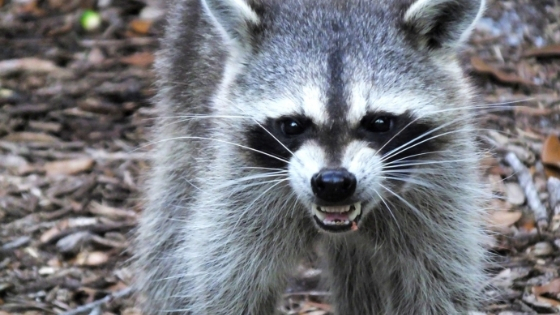Unfortunately, there are many animals out there that would love to make an easy meal of your flock. One of the most notorious chicken predators is the raccoon. Raccoons are deadly, smart and determined. They’re also vicious and unrelenting. Here’s the first in our 4-part series of how to identify chicken predators: raccoons.
Identifying Raccoon Attacks
Raccoons will leave behind a complete mess when they’ve attacked your chickens. If they cannot get into your coop, they will settle for reaching through fencing and pulling your chickens through the fence, piece by piece. After a raccoon attack, you’ll notice blood and feathers everywhere with pieces of chickens inside the coop and outside of the coop. They will pull off any piece they can reach, heads, wings, legs, and innards. They prefer to eat the breast meat and they can be quite wasteful. If they can get to the breast meat, they will eat it and then move on to the next chicken.
Raccoons are nocturnal and will attack your chickens at night, when they are most vulnerable. Roosting chickens won’t try to get away and you may not hear any sounds of your chickens being attacked. Most attacks on your chickens that happen at night are due to raccoons. Raccoons live in family groups and multiple raccoons can attack your coop at a time. Once they make a quick meal of your chickens, they will return again and again if they can.

See more posts on how to identify chicken predators:
How to Identify Chicken Predators: Foxes
How to Identify Chicken Predators: Birds of Prey
How to Identify Chicken Predators: Weasels
Preventing Raccoon Attacks
Raccoons are crafty and will try hard to get to your chickens. They can work simple latches with their hands, so make sure that your coop is locked up tight with latches that are difficult to open or have multiple steps involved. They are excellent climbers and will scale a coop easily and climb over if there is not a sturdy roof. They aren’t much for digging, but they will enter the coop through any holes that they can fit through. Check your coop daily for places where a raccoon could slip in. Repair any holes in the coop as soon as you notice them. It only takes one night of raccoons getting to your chickens for you to have serious problems. Make the chickens a roosting area that is completely secure and out of reach of grabbing raccoon hands. It’s a good idea to have a coop with solid, sturdy walls. Discourage your chickens from roosting near the edges of the run. Chickens roosting within a foot of the run walls are easy game for raccoons. Motion detected lights can help deter raccoons for a while, but they will become accustomed to the lights and eventually will ignore them. If you have raccoons, you can set up live traps to catch them and relocate them. Keep in mind though that as you remove one raccoon, there are several more that would love to make a meal of your chickens.